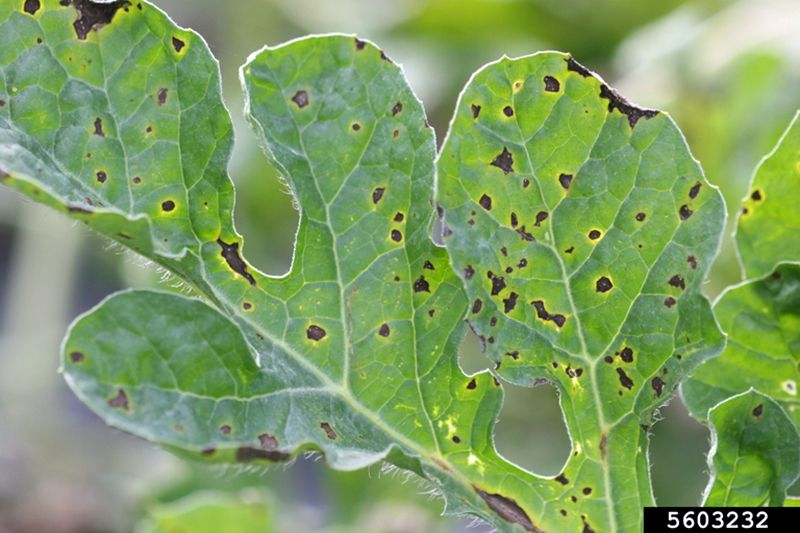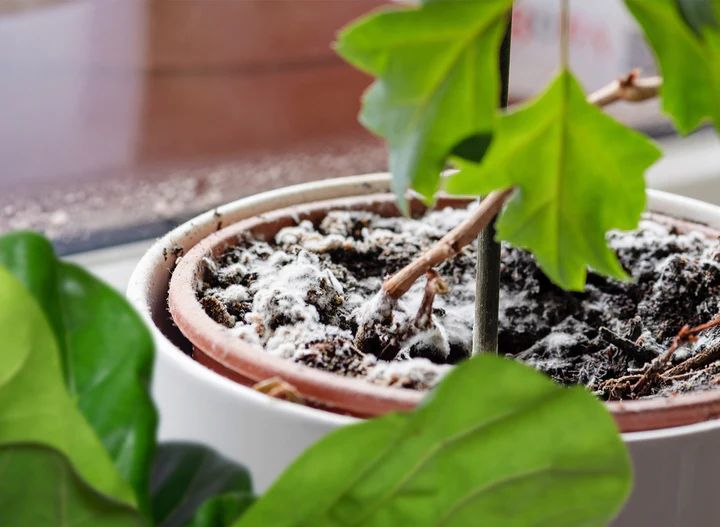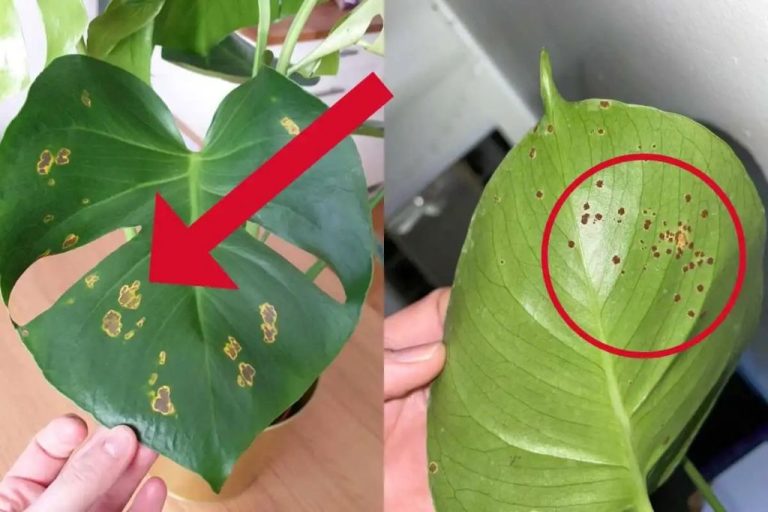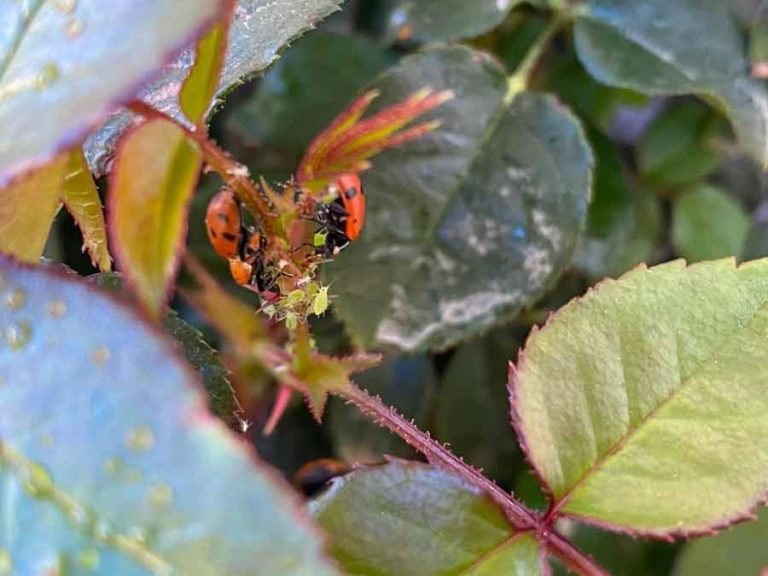Identifying And Treating Anthracnose: Protecting Your Plants From This Fungal Disease
What is Anthracnose?
Anthracnose is a term used to describe a variety of fungal diseases that affect plants, especially trees and shrubs. The name comes from the Greek words “anthrax” meaning coal and “knosis” meaning killing, referring to the black lesions these fungal diseases cause on plant tissues (https://ipm.ucanr.edu/PMG/PESTNOTES/pn7420.html).
Anthracnose is caused by different species of fungi in the genera Colletotrichum, Gloeosporium, and others. These fungal pathogens thrive in warm, humid environments and can infect leaves, twigs, fruits, and trunks of host plants (https://portal.ct.gov/CAES/Fact-Sheets/Plant-Pathology/Anthracnose-Diseases-of-Trees).
Many types of plants can be affected by anthracnose fungi, including trees like sycamore, oak, maple, ash, walnut, and dogwood, as well as shrubs, fruits, vegetables, grasses, and herbaceous plants. The specific fungus causing anthracnose differs depending on the host plant (https://www.britannica.com/science/anthracnose).
How Anthracnose Spreads
Anthracnose spreads through spores produced by the fungal pathogens that cause the disease. These microscopic spores can be spread by wind, water, insects, animals, contaminated tools, and infected plant debris.
The fungal spores thrive in wet, warm conditions. Rain, overhead irrigation, high humidity, and heavy dews promote the germination and spread of the spores to new growth on plants. Splashing water from rainfall or watering spreads the spores from infected to healthy plant tissue.
Infected plant debris left on the ground or around plants serves as a source of inoculum for new infections. Fungal spores overwinter in this debris and serve as the primary source of new infections in the following growing season. Properly disposing of infected leaves, twigs, and other debris helps reduce the amount of overwintering spores.
According to the University of Minnesota Extension, “If weather conditions remain cool and wet, spores will form within the leaf spots and spread throughout the tree canopy. These spores will form new leaf spots.” (https://extension.umn.edu/plant-diseases/anthracnose-trees-and-shrubs)
Symptoms of Anthracnose
Anthracnose causes a variety of symptoms depending on the host plant. Some common symptoms include:
Leaf spots – Small, dark, irregularly shaped lesions first appear on leaves. These spots can expand, killing the leaf tissue and leaving holes in foliage. Leaf spots may be bordered by a yellow halo.
Stem cankers – Sunken, discolored areas form on twigs, shoots and stems. Cankers can eventually girdle and kill branches.

Wilting – Foliage wilts and droops as the disease spreads and disrupts water transport through the plant.
Defoliation – Heavily infected leaves turn brown and fall off prematurely. Plants may be completely defoliated in severe infections.
Plants Prone to Anthracnose
Anthracnose can affect a wide variety of plants, including many common fruits, vegetables, trees, and ornamentals.
Some of the most susceptible plants include:
- Fruits – Cucumber, melons, eggplant, tomato, pepper, strawberry, raspberry
- Vegetables – Lettuce, spinach, beans
- Trees – Oak, sycamore, elm, walnut, dogwood, maple, ash, poplar
- Ornamentals – Roses, poinsettia, grasses, flowering annuals like petunias and vinca
Anthracnose fungi are very host-specific, meaning strains that infect one type of plant are typically unable to infect unrelated plants. For example, the anthracnose fungus that affects cucurbits will not spread to nearby trees. However, related plants in the same family may be vulnerable to the same strains [1].
The most susceptible plant parts are typically young, actively growing tissues like new shoots, leaves, flowers, and fruits. Mature plant tissues are more resistant [2].
With proper prevention and management strategies, even vulnerable plants can thrive despite the presence of anthracnose fungi.
[1] https://extension.umd.edu/resource/anthracnose-disease-vegetables
[2] https://ipm.ucanr.edu/PMG/PESTNOTES/pn7420.html
Preventing Anthracnose
There are several cultural practices that can help prevent anthracnose from taking hold in your garden or landscape:
First, be sure to remove any infected plant material as soon as you notice it. Prune out affected leaves, stems, and branches, and destroy them by burning or deep burial. Don’t compost diseased material as the spores can survive and spread. According to the University of California IPM guidelines, removal of infected material is crucial for effective management of anthracnose diseases (https://ipm.ucanr.edu/PMG/PESTNOTES/pn7420.html).
Proper spacing of plants can also reduce humidity and allow for better air circulation, creating an environment less favorable to the anthracnose fungus. Avoid overcrowding plants and allow sufficient space between them based on their expected mature size.
Finally, try to water at the base of plants rather than from overhead. Overhead watering can splash spores from infected leaves onto healthy plant parts. Drip irrigation or soaker hoses can help direct water right to the roots while keeping foliage dry (https://www.almanac.com/pest/anthracnose).
Treating Existing Anthracnose
If anthracnose is already present, treatment will focus on stopping the spread of the fungal disease and minimizing damage to affected plants. There are several methods for treating existing anthracnose infections:
Fungicides
Applying commercial fungicides containing chlorothalonil, myclobutanil, propiconazole, thiophanate-methyl or copper can help stop anthracnose from spreading (source). Follow label instructions carefully. Multi-site mode of action fungicides are recommended to minimize resistance. Begin treatment at first sign of disease and repeat applications as directed on the product label.
Improving Air Circulation
Anthracnose thrives in damp, humid conditions. Improving air circulation allows plants to dry out faster, creating an less hospitable environment for the disease. Thin out overcrowded plantings, trim back encroaching vegetation, and selectively remove lower foliage to allow more air movement (source).
Protective Sprays
As a preventive measure, copper-based fungicides or horticultural oils can be sprayed on plants susceptible to anthracnose before symptoms occur. This protective barrier makes it harder for fungal spores to infect the plant. Focus on coating the undersides of leaves and areas with poor air circulation (source).
Chemical Treatment Options
Fungicides can be an effective chemical treatment for controlling anthracnose. Some common fungicides used against this disease include chlorothalonil, copper, and mancozeb.
Chlorothalonil is the active ingredient in many commercial fungicides like Daconil. It works by preventing spore germination and is considered a protectant fungicide. Studies show chlorothalonil is very effective at controlling anthracnose when applied preventatively before disease onset (https://ipm.ucanr.edu/PMG/PESTNOTES/pn7420.html).
Copper fungicides can also help manage anthracnose. Copper diammonia complex products work by inhibiting the spread of fungal spores. Regular applications are needed for good protection. Copper compounds work best before disease symptoms appear (https://www.gardentech.com/disease/anthracnose).
Mancozeb is another protective fungicide labeled for anthracnose control. It works by preventing spore germination. Mancozeb is most effective when applied before fungal infection occurs.
For best results, fungicides should be applied preventatively before disease onset. Frequent applications may be required, especially during wet conditions favorable to the disease. Always follow label instructions for rates and timing.
Organic options are more limited but include fungicides with active ingredients like neem oil, potassium bicarbonate, Bacillus subtilis, and hydrogen peroxide. Though these generally need more frequent applications than synthetic fungicides.
Cultural Control Methods
There are several cultural practices that can help prevent and manage anthracnose without relying on chemical fungicides:
Crop rotation – Rotating annual crops to a different part of the garden each year can help minimize disease carryover in the soil. Avoid planting the same crops in the same location for consecutive years.
Proper irrigation – Watering plants at the base and avoiding wetting foliage helps reduce spore spread. Drip irrigation and soaker hoses are recommended over overhead watering.
Sanitation practices – Removing and destroying infected plant material through pruning or removal can eliminate sources of overwintering spores. Clean up fallen leaves and debris around plants.
Other tips include providing good air circulation around plants through proper spacing and avoiding crowding, and planting anthracnose-resistant varieties when available.
For more details see: https://ipm.ucanr.edu/PMG/PESTNOTES/pn7420.html
When to Call a Professional
In most cases, home gardeners can effectively manage anthracnose using cultural practices and chemical treatments. However, there are some situations where calling a professional may be necessary:
If you are dealing with a severe infestation that is quickly spreading, professional help may be required. Widespread anthracnose can rapidly defoliate trees and shrubs, so prompt action is needed to get the outbreak under control. Professionals have access to commercial-grade fungicides and treatment methods that homeowners do not (Penn State Extension).
Anthracnose on food crops or fruit trees may also warrant calling in an expert. Some fungicides available to professionals are labeled for use on edibles while homeowner products are not. A professional can recommend the safest, most effective treatment for anthracnose on harvestable plants (UC IPM).
In areas where anthracnose is common, preventative annual treatments by a licensed applicator may be recommended. They have the proper training and equipment to thoroughly cover large trees. Bringing in a proactive maintenance plan can help avoid serious anthracnose damage down the road.
Outlook and Prognosis
While anthracnose can be alarming, the overall outlook and prognosis for plants infected with anthracnose is positive with prompt treatment. The key is to proactively manage the disease using preventative measures and to promptly treat any signs of infection to prevent it from spreading. Early identification is vital as it can take hold quickly.
With diligent cultural practices such as proper watering, sanitation, and fertilization, the risk of anthracnose can be significantly reduced. Avoiding overcrowding plants and promoting good airflow will also help prevent the fungus from taking hold. If caught and treated early using chemical or organic fungicides, the prognosis is excellent, and most plants will recover fully with minimal defoliation or dieback.
However, left untreated, anthracnose can seriously impact the vigor and aesthetics of trees, shrubs, and other landscape plants. Ongoing infections will weaken the overall health of plants, making them more prone to other issues. So it is vital to both prevent anthracnose and promptly treat any occurrences to ensure the best outcome for afflicted plants.






